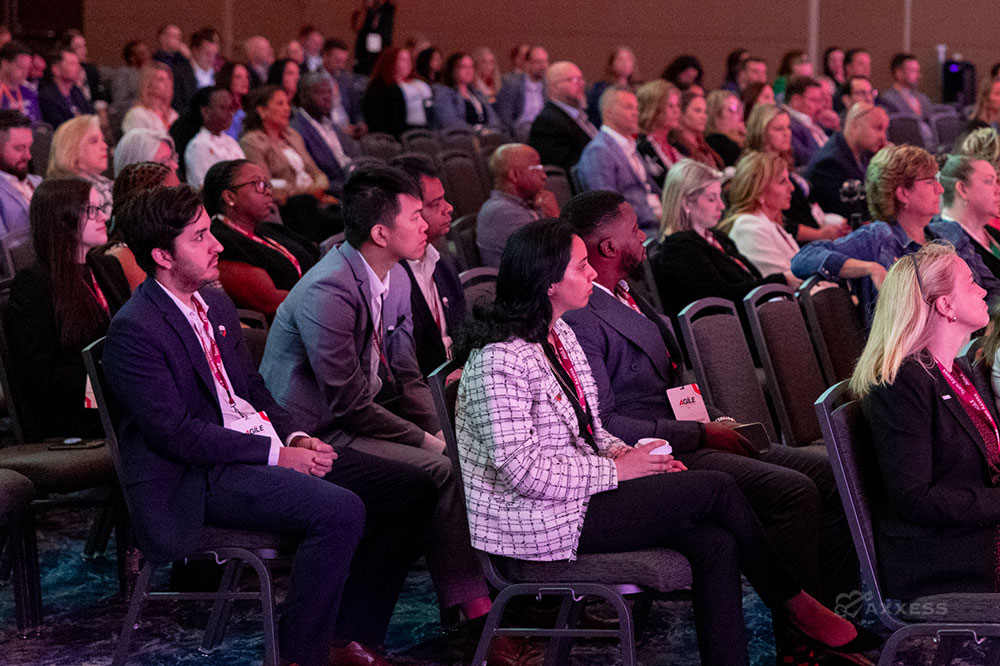
The nonmedical home care industry is currently navigating a complex terrain of new compliance challenges, regulatory scrutiny and heightened expectations for quality and outcomes.
In an education session at the 2024 Axxess Growth, Innovation and Leadership Experience (AGILE), Guy Tommasi, President and CEO of Corcoran Consulting Group, and Arlene Maxim, RN, HCS-C, Senior Vice President of Clinical Services at Axxess, discussed the difficulties home care organizations are currently facing and shared strategic insights on how to overcome these hurdles.
Compliance
Compliance challenges for home care providers are emerging from multiple ongoing developments, including evolving regulations, technological advancements and changing reimbursement models.
Maxim discussed the challenges home care providers will face as more states begin requiring these organizations to be licensed.
“There are going to be more states that will be requiring licensing,” Maxim said. “For many, many years now, the private sector has kind of worked on a wing and a prayer. … Many organizations haven’t taken the time to have sophisticated policies like you’re required to have in certified care. … With more licensing requirements, more folks looking to become accredited in the private world, and more insurance companies paying … for more and more of the private sector, … I think it’s going to be a difficult thing for some organizations because that’s going to be a huge pivot for them. They’ve been without any regulation and now they’re going to be regulated.”
Tommasi agreed, encouraging organizations to ask themselves, “How can I continue to be creative and innovative under some type of guideline?” He urged providers struggling to navigate these new regulations to lean on technology, partnerships and diversification.
“We have to adjust on our diversification of revenue streams,” Tommasi said. “We have to look at technology. Look at the platforms that are out there that allow us to be innovative, that maximize that return on our investment. Look at branching out and partnering with different other groups. I always like to say, ‘Partnering is surviving.’ Especially in the nonmedical space today, you cannot do it alone. It’s extremely competitive. You need partners.”
Audits and Scrutiny
As the nonmedical sector increasingly adopts regulatory measures similar to those in the medical care sector, home care organizations must brace for increased scrutiny and potential audits.
“You should never, ever be afraid of an audit,” Maxim said. “You should be doing the right thing all the time. The biggest part of that is setting the stage, setting the foundation for your organization.”
She stressed the importance of effective orientation processes to ensure clinicians understand what needs to be documented for successful audits. This is essential for all audits, Maxim says, but particularly those performed by insurance payers, where the primary focus is to review documentation and ensure the services billed meet the payer’s criteria for payment.
“When you have the insurance payers [performing audits], they’re primarily looking at the documentation, so the documentation has to be the way it needs to be, and if you don’t have a proper orientation, you don’t train your staff on what needs to be in the documentation, you’re not going to have what they need,” Maxim said.
Tommasi instructed organizations to perform internal audits and pay close attention to service contracts, which are often reviewed during audits and must comply with state requirements.
“Where I saw and continue to see the biggest challenge for the private agencies is in your service contracts,” Tommasi said. “Every state has different things that are required. Really watch that. … Look at those contracts, stay current, be honest and do internal audits.”
Quality and Outcomes
Maxim expects mandated quality reporting to be a nationwide standard for nonmedical home care within the next five years, meaning care quality and outcomes will become increasingly important factors in how these services are evaluated and reimbursed.
Tommasi and Maxim agree that improving the quality and outcomes of care will require organizations to shift their culture and mindset to prioritize continuous learning and client-centered approaches.
“It’s a mindset that we have to be willing and ready to do and take on,” Tommasi said.
He advised organizations to use their outcomes and data as leverage to set themselves apart from other organizations in the nonmedical home care industry.
“It’s the outcomes and the data that [separate] us from the pack, so be willing to embrace the data, the right data,” Tommasi said. “You will separate yourself because the stakeholders will see that. It resonates with them when you start talking rehospitalization [rates], functional [outcomes], satisfaction [levels] – that resonates with them. You provide that outcome? I guarantee you will go to the top of the pack.”
AGILE 2025 will be held May 5-7 in Dallas. Visit the AGILE conference website for details.
